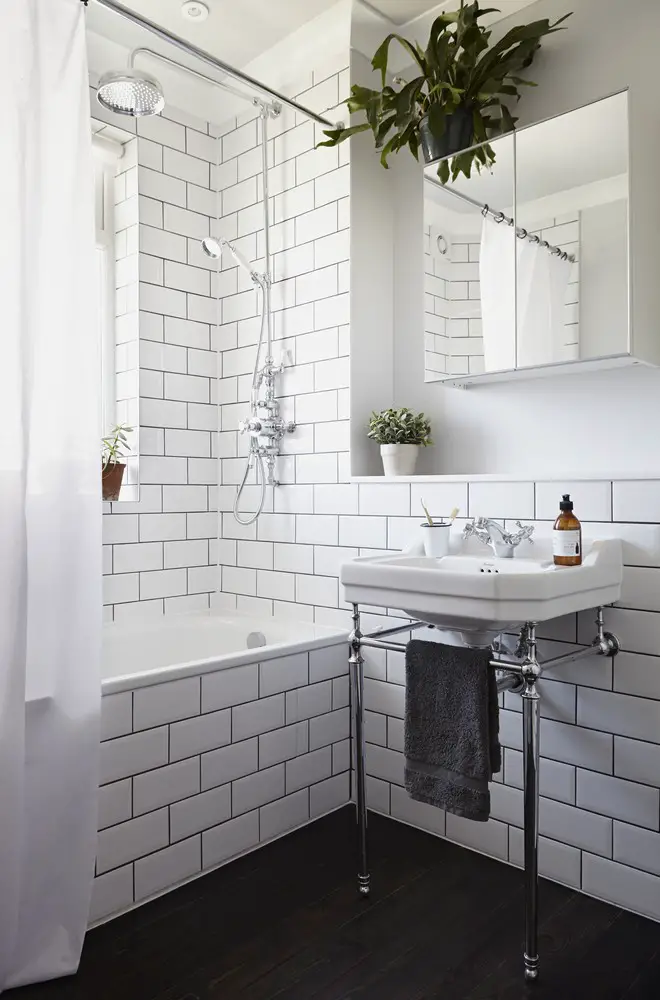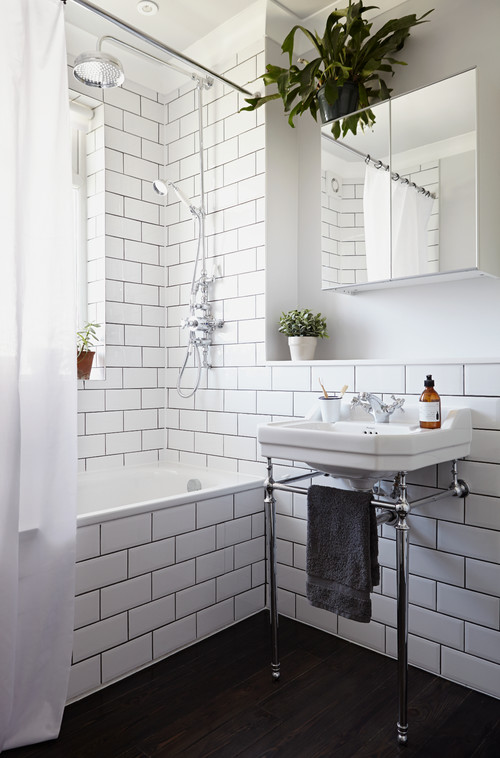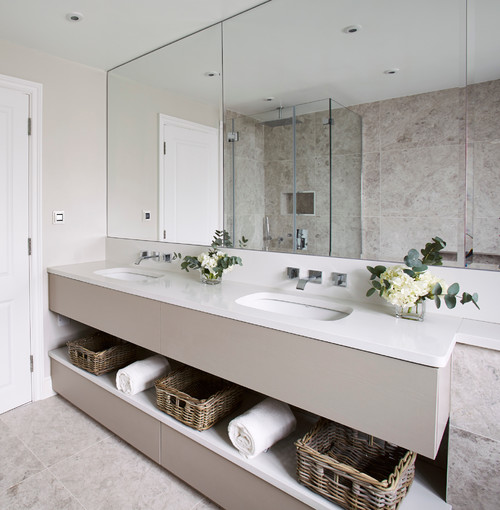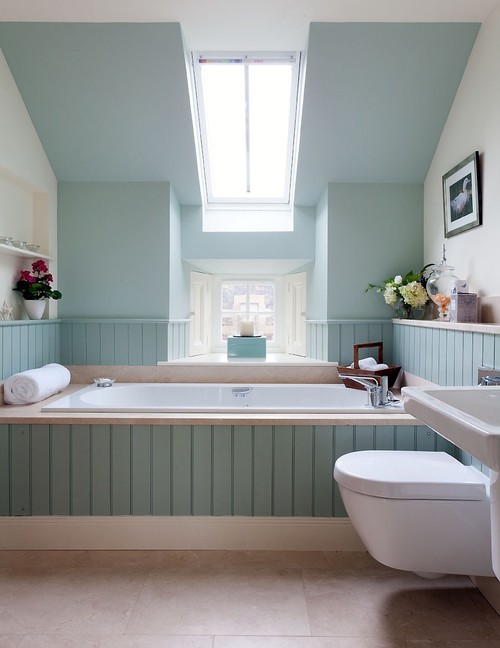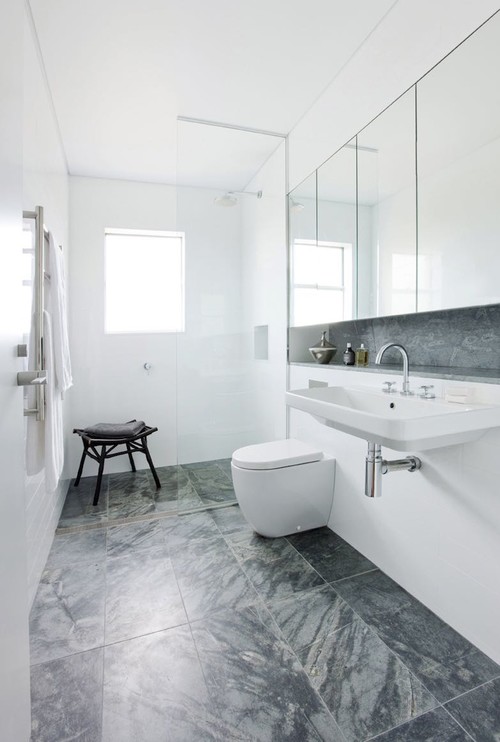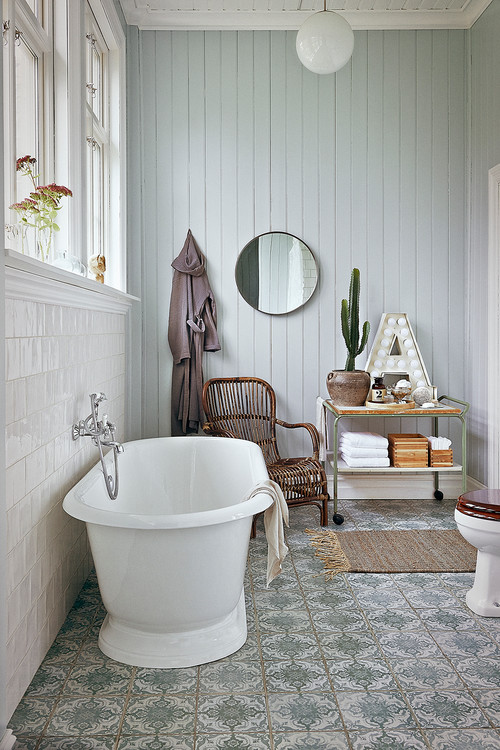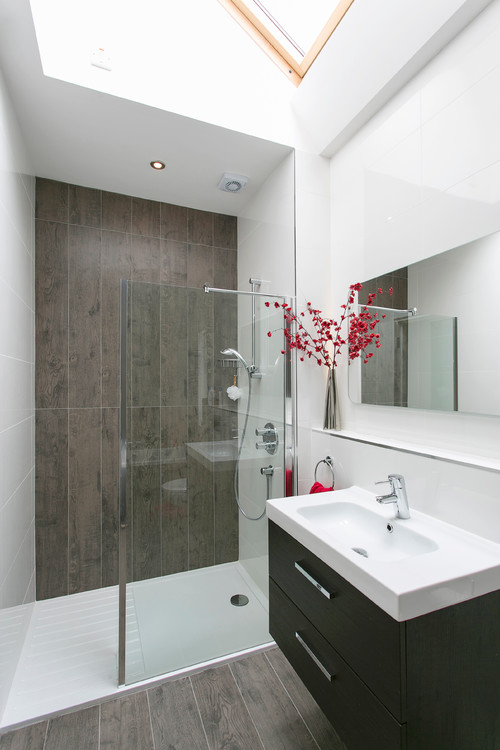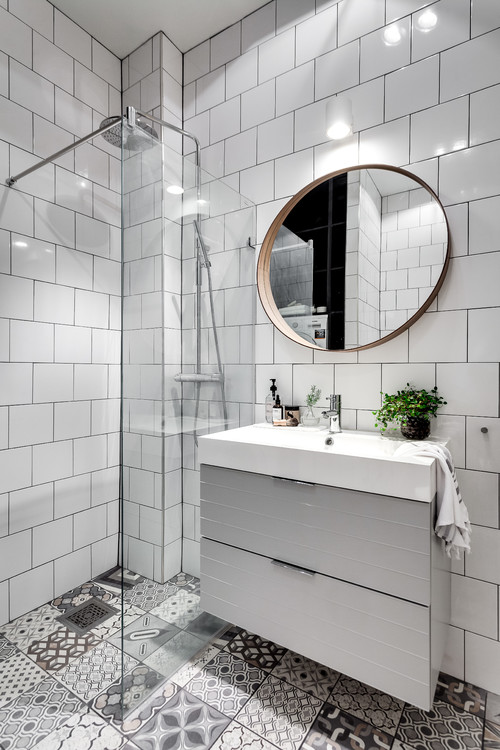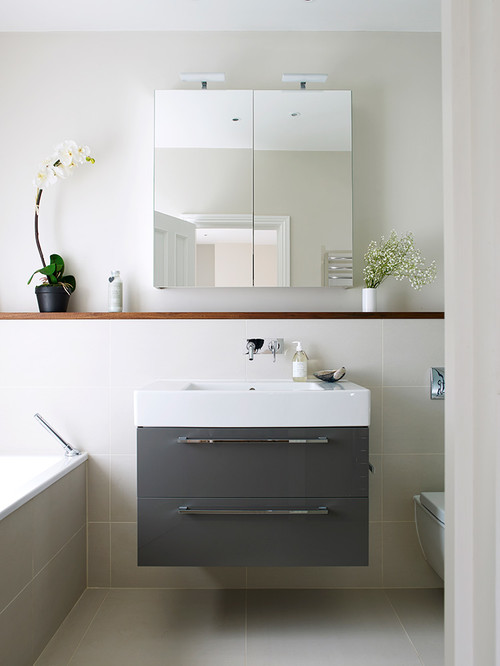The Perfect Bathroom Layout, Home Architecture and Interiors Images
The Perfect Bathroom Layout: Dimensions to Know
The Dimensions You Need to Know – Architectural Article by Houzz
15 Jan 2018
The Perfect Bathroom Layout
Bookmark this valuable guide to choosing the right-sized sanitaryware for your washspace
Full article first published on Houzz
Eva Byrne, Houzz Contributor
Scene of our daily ablutions, the bathroom is a space where we crave calm and a sense of ritual. But creating this oasis can be challenging, especially in a small room. The secret is to choose fittings of an appropriate size and to locate each of these to best advantage. Here’s a guide to the dimensions and space needs relevant to each element, which will help you design a bathing idyll.
Single sink
You’ll find an endless array of sink sizes and configurations, but a sink 50-60cm wide x 40cm deep will suit most family bathrooms perfectly. A sink as small as 45cm wide will work well for an en suite or smaller bathroom.
Where space is limited, you can fit the sink snug to a wall on one side but you’ll need to allow 20cm between the sink and any other fitting.
A key consideration is to choose a tap with a spout appropriate to the design of the sink. For instance, a short spout on a flat-bottomed, large basin, as opposed to a basin with a slanted base, may lead to the sink-bed not being cleared properly after each use. This can lead to a build up of scum and grime. Choosing a tap with a longer spout that will be closer to the sink bottom can solve this as the water will be able to clear the waste better.
Get expert tips on choosing the perfect taps for your basin
Double sink/vanity
If space allows, a double sink or a double basin vanity unit is a great addition to a busy bathroom. Depending on the design of the sink or vanity unit, you’ll need to allow between 150-180cm for two sinks side by side.
Whatever sink you choose, you should allow at least 60cm between the front of the sink and the wall or any other fitting opposite for passage.
If you are interested in a good range of bathroom faucets then check this link.
Wall-mounted toilet
A toilet hung from the wall, and with a concealed cistern, brings a sense of space to any bathroom. Cleaning the floor is so much easier too.
You can vary the height of the pan to suit your personal taste, with a height of 50cm above the floor a good average. Leave at least 15cm between the bottom of the pan and the floor for easy mopping. The toilet pan will typically average about 52cm in depth, in front of which you will need to leave at least 60cm clear for passage.
Concealed cisterns typically measure 15-25cm in depth, allowing for a handy shelf or even storage cupboards on top.
Floor-mounted toilet
Traditional toilets continue to improve in terms of design, with a large range of styles and sizes available.
Compact versions as small as 36cm wide x 62cm deep are now available – great where space is at a premium. You’ll need to allow at least 20cm each side of the toilet for ease of fitting and access.
Some floor-mounted toilets come with concealed cisterns also, as seen here. Contemporary concealed cisterns are accessed via the flush plate, eliminating the need to provide removable shelves or to dismantle the housing if ever there is a problem with the cistern.
Bath
The average bath measures 170cm long x 70cm wide, but you will find a bath size to suit most bathroom shapes and sizes.
A bath 130cm long x 70cm wide is no larger than a generous shower tray, but will allow the most die-hard bath fan a good soak in a compact bathroom.
Make sure to climb in and test how a bath suits you before you commit to purchase. Too deep or too short a tub can be annoying and completely spoil the bathing experience. A doubled-ended bath, as shown here, where the taps are in the middle, can be great for bathing small children – or for sharing!
Shower tray
The bigger the better nowadays when it comes to shower trays, but the reality is that anything less than 80cm x 80cm will feel very cramped.
A quadrant tray, where one corner is rounded, can reduce the impact of the shower enclosure in a small room without compromising on the comfort in use.
A rectangular shower tray will provide the optimal showering experience and, depending on the location of the shower head, may even eliminate the need for a shower door. A tray at least 150cm long will be needed to achieve this. A fixed glass panel along the length of the tray, with at least a 60cm gap for access to the shower, can protect the room from splashes.
Browse shower room ideas
Wet room
Advances in wet room technology have liberated us from the need for shower trays in many situations, with level-access shower solutions more and more achievable.
You’ll need to allow for a space at least 80cm wide for showering, with any enclosure optimally 190cm high.
Unless you have a very large space with the shower in a distinct zone, it is generally preferable to allow for glass, as here, or other panels to contain the shower water.
What to consider when planning a wet room
Storage
As with any room, plan your storage as part of your space layout from the start. Wall cabinets or vanity units with shallow shelves are always useful in a bathroom: shelves 12cm deep will accommodate toilet rolls as well as most other bathroom supplies. A shelf depth of 45cm deep is ideal for storing towels and other items of bathroom linen. Shelves shallower than this will work too, you’ll just need to fold your towels accordingly.
Adjustable shelves will be handy for housing a variety of contents, from short medicine bottles to super-tall cleaning bottles. Under-sink drawers provide handy storage, too. With the flotsam and jetsam stored beautifully out of sight, your only task now is to set about enjoying your very own oasis of calm.
Residential Property Articles
Contemporary Property Articles – architectural selection below:
Comments / photos for the The Perfect Bathroom Layout – The Dimensions You Need to Know article page welcome

